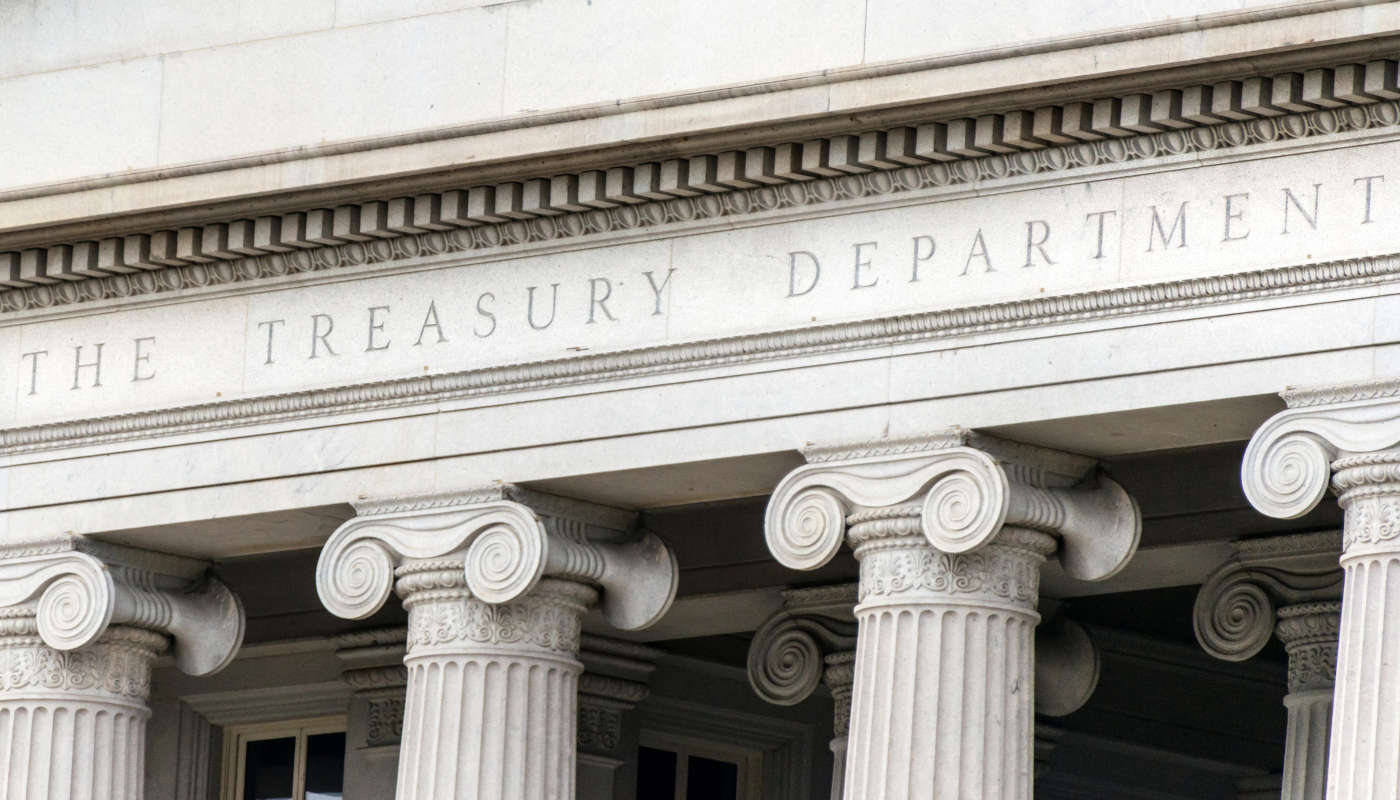
The unprecedented trading volume and volatility spikes in the U.S. Treasuries market in March, in response to the COVID-19 pandemic, rekindled an ongoing discussion around the ideal market structure for these securities. Throughout these discussions, greater use of central clearing has remained as an essential improvement for the marketplace.
The Treasury Market Practices Group (TMPG), sponsored by the Federal Reserve Bank of New York, states in a white paper that “bilateral clearing involves varying risk management practices that are less uniform and less transparent . . . and may be less efficient with regard to netting exposures and use of collateral, as compared to central clearing.” TMPG estimated in 2018 that “12.7% of outright purchase and sale of U.S. Treasury transactions are centrally cleared for both original counterparties, and that 19.4% of transactions are centrally cleared between an interdealer broker (IDB) and one of the original counterparties but not the other counterparty. The remaining 67.9% of transactions, most of which are customer-to-dealer, do not involve a CCP [central counterparty].”

Reviewing those findings, Professor Darrell Duffie of the Stanford Graduate School of Business presented a paper at the Brookings Institution in June, Still the World's Safe Haven?: Redesigning the U.S. Treasury Market After the COVID-19 Crisis. He noted that “the general lack of central clearing in the U.S. Treasury market is a significantly missed opportunity to improve market robustness and efficiency. Central clearing also improves market safety by lowering exposure to settlement failures [and] reduces the amount of dealer balance sheet space necessary to maintain liquid markets.”
Over the past several years, we've seen substantial improvements in the accessibility of clearing for market participants. However, varying incentives for different types of participants have resulted in an uneven level of central clearing adoption.
Clearing During the Crisis
For its part, DTCC provides CCP services to the Treasury market through the Government Securities Division (GSD) of its subsidiary, the Fixed Income Clearing Corp. (FICC). GSD offers a suite of services for the submission, comparison, risk management, netting and settlement of trades executed by its members in the U.S. government securities market. FICC provides a guaranty of settlement of all compared trades and serves as the central counterparty for the settlement obligations it novates.
On average, FICC clears $4.2 trillion in U.S. Treasury activity daily, including both outright and financing, and currently has 177 netting members and almost 2,000 sponsored members. FICC's rules-based framework provides certainty to market participants in the face of threats to market stability, which mitigates the risk of generalized runs on the market and fire sales in a member default scenario.
The soundness of this infrastructure was demonstrated during the COVID-19 crisis: Clearing volumes exceeded a peak over $6 trillion during March 2020, and FICC effectively maintained liquidity. Even ceasing to act for a GSD member during the crisis did not result in an adverse market impact nor any loss allocation to members.
FICC admits eligible regulated firms as direct clearing members who can clear their trading activity with other FICC members. To become a direct member of the CCP, a firm needs to satisfy prescribed capital requirements and be responsible to FICC for satisfying margin, liquidity and loss allocation obligations generated by its novated activity.
Systemic Resiliency
Because of the benefits of central clearing, FICC has invested considerably in recent years to expand access to clearing for more and different types of market participants across asset classes, tailoring services in response to market needs to also include sponsored membership.
As the primary CCP for U.S. Treasury securities, FICC has the established infrastructure for supporting this activity and maintaining the market's safety, soundness and resiliency. Also, as a CCP, FICC is uniquely able to orderly control the liquidation of a defaulted member and prevent the risk of drain on liquidity in the U.S. Treasury market in a stress scenario.
Because of these systemic benefits, the capital requirements for banks and broker-dealers with respect to their securities financing transactions, including repo, generally incentivize them to centrally clear as much of this activity as possible. Specifically, centrally clearing repo transactions at FICC may alleviate capital constraints on members by enabling them to reduce capital usage via balance sheet netting and lower risk weights in their risk-based capital ratios. By alleviating capital constraints for their bank and broker-dealer counterparties, participating in centrally cleared repo at FICC, in turn, offers institutional clients the potential for growth of their on-loan balances and income as counterparties shift their demand to CCP channels.
The PTF Exception
These benefits provide incentives for most, but not all, intermediaries to centrally clear U.S. Treasury market activity.
Principal trading firms (PTFs), for example, continue to participate in the Treasury space bilaterally, though they provide liquidity through market-making. PTFs typically employ algorithmic and high-frequency trading strategies to actively buy and sell large volumes of U.S. Treasuries for their proprietary accounts on an intraday basis. Treasury officials estimate PTFs average about 20% of overall volumes and account for around 60% of electronic IDB volume.
PTFs, therefore, serve an important role in the price discovery process. In addition, they will typically act as short-term liquidity providers, but will rarely carry large amounts of inventory overnight. Operational support, however, is predominantly outsourced by PTFs to their prime brokers, who provide bilateral settlement services and both same-day and long-term financing to their clients if necessary.
Thus, if a PTF with large open-position exposures or fails defaulted intraday, then in addition to the loss of liquidity provided by that PTF, there could be larger systemic impacts if the default caused the firm's prime broker or IDB to suffer significant losses or liquidity shortfalls. Central clearing mitigates this risk by providing an infrastructure that carefully manages such defaults through the use of margin collection, which further serves to lessen concentration concerns among intermediaries.
More Clearing, Less Risk
To increase PTF participation in central clearing, FICC has sought to ease impediments to clearing by lowering fees and broadening access to clearing. Though these key impediments to central clearing have been removed, greater incentives in this area are needed.
Continued fragmentation hurts the market from a capital, liquidity or risk management perspective, and arguably increases the risk of a fire sale in the event of a dealer default.The infrastructure is in place, however, to support all activity of participants that choose to enter centralized clearing.
Where economic incentives are strong, such as with the buy side in using the Sponsored Service, we see a strong uptake in clearing. Where economic incentives are weaker, additional measures, such as requiring PTFs and other market participants to centrally clear Treasuries when specified liquidity or trading volume thresholds are triggered, may be the best means to achieve increased participation in centralized clearing across the U.S. Treasury marketplace.
Such measures could further serve to promote stable market functioning and facilitate the provision of liquidity by involving U.S. Treasury liquidity providers in central clearing's mutualized risk program.
Murray Pozmanter is managing director, head of clearing agency services and global business operations, Depository Trust & Clearing Corp. (DTCC).